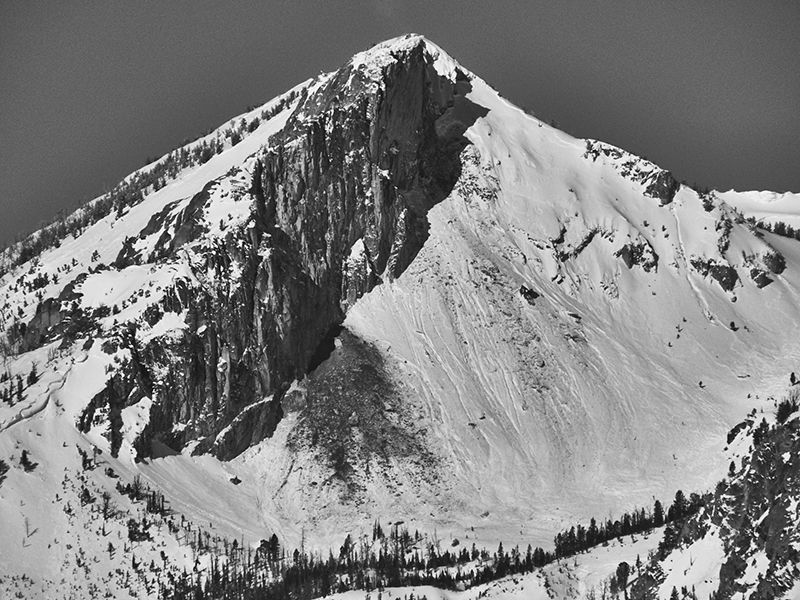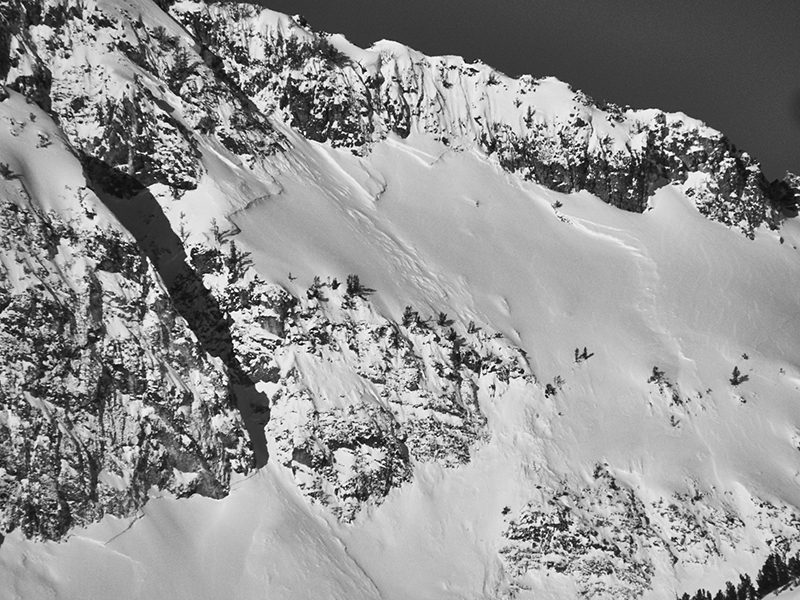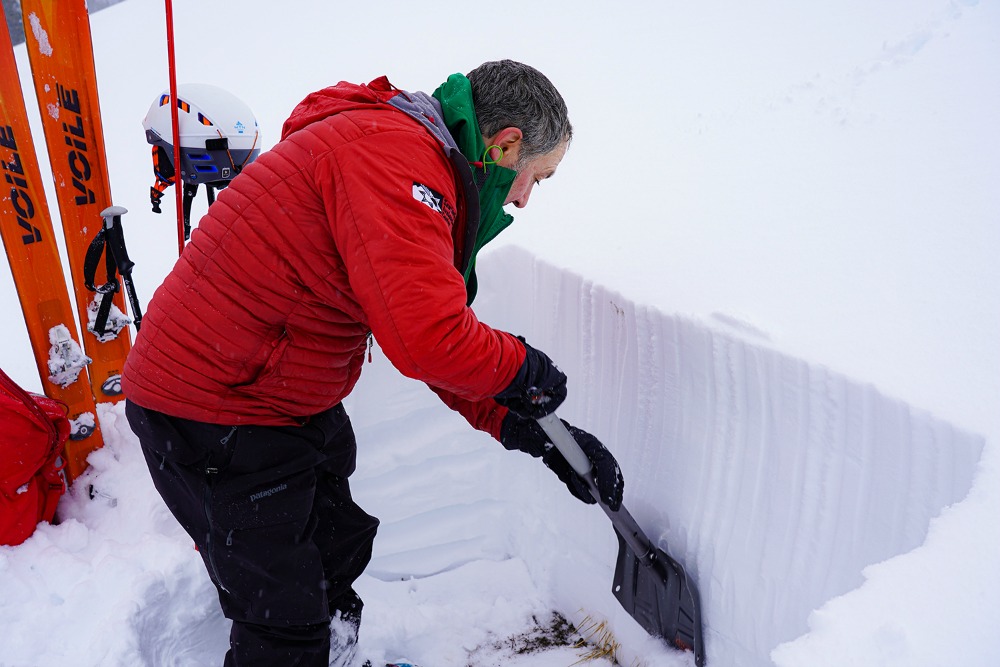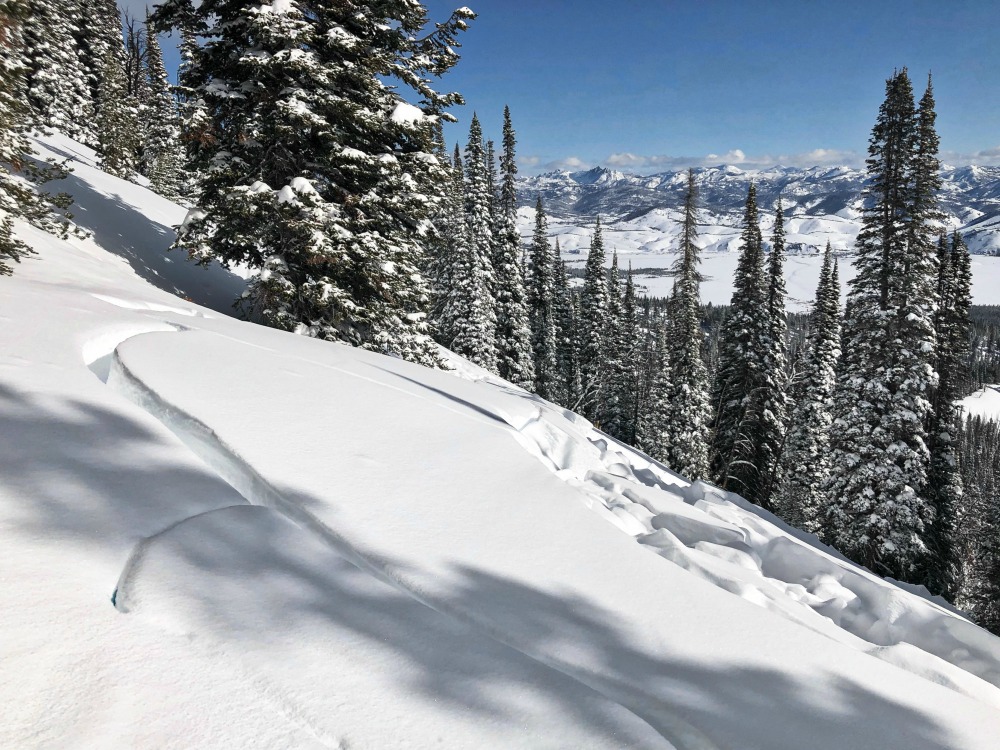From the U.S. Forest Service Sawtooth Avalanche Center (SAC)
April 2, 2020
Summary: At 5:52 PM on Tuesday, March 31st, a 6.5 magnitude earthquake shook central Idaho and the surrounding area. The quake’s epicenter was in the SAC Banner Summit zone, about 20 miles northwest of the town of Stanley, Idaho. The earthquake occurred at the end of a major spring snowstorm that dropped 2-3 feet of new snow in the mountains adjacent to the earthquake. The avalanche danger was rated as HIGH on the day of the earthquake (see Avalanche Forecast for the day). HIGH danger means that “Very dangerous avalanche conditions exist. Natural and human-triggered avalanches are likely.”
In addition to feeling the obvious effects of the earthquake, many Stanley residents reported hearing the rumble of avalanches coming from the nearby Sawtooth Mountains when the earthquake occurred. Clearing weather on April 1st revealed incredibly widespread avalanching in the Sawtooth Mountains and in the mountains closer to the epicenter near Banner Summit. While some of these avalanches may have occurred naturally prior to the earthquake, evidence suggests that the majority of them released as a direct result of the earthquake.
By all accounts, a major earthquake occurring during a period of elevated avalanche danger resulting in widespread avalanching is a very rare and historic event for Idaho.
First Hand Account: SAC Avalanche Specialist Chris Lundy was in the Sawtooth Mountains near Williams Peak when the earthquake struck. Here’s what he had to say:
“When the earthquake hit, all of the trees shook and snow was falling out of them—that image will remain in my mind forever. Almost immediately, we heard the rumbling sound of avalanches reverberating in the mountains. Even though we were in a location that was safe from avalanches, we felt very vulnerable as the mountains shook around us.
The next day, we climbed higher into the mountains to take advantage of good visibility and look at what happened. Avalanches were everywhere. Snow that had previously been clinging to the steep, rocky faces of the Sawtooths had been rattled off. Crown lines from slab avalanches were countless. Even on lower angled slopes that were not steep enough to avalanche, we found cracks in the snow as if the whole snowpack had shattered.”
Additional Quote: SAC Director Scott Savage
“When skies cleared and the proverbial—and maybe literal—dust settled the day after, the sheer carnage the earthquake caused quickly became apparent. In the northern Sawtooth Mtns near the epicenter, hundreds of steep slopes had avalanched. As you moved into the Smoky Mtns about 45 miles south of the epicenter, the number, type, location, and appearance of the natural avalanches still made it obvious that something unique triggered the slides. Our initial observations suggest the earthquake triggered avalanches to the south at least 60 miles away, not quite to Ketchum. We also heard about some folks enjoying a soak in a natural hot springs near the Sun Valley Ski Area when the earthquake struck. They reported watching a wet loose avalanche release, knock down a few trees, and cross the creek near them. Those hot springs are 63 miles from the epicenter.”
Earthquakes & Avalanches: Below is a general FAQ about how earthquakes and avalanches interact.
- Do earthquakes cause avalanches? Yes. They occur frequently enough that there is a formal Snow, Weather, and Avalanche Guidelines (Greene et al, 2016) trigger code for earthquake-caused avalanches: NE. Significant avalanche activity has been attributed to large earthquakes in at least 22 cases in the Himalayas, Japan, Russia, the Andes, New Zealand, Alaska, northwestern Canada, in the mainland United States, and in other locations (Podolskiy et al, 2010).
- How do earthquakes cause avalanches? The working model for avalanche release involves small cracks initiating within a weak layer and then growing to a critical size where the weak layer collapses vertically. After the weak layer collapses, the slab releases and moves downslope. The motion caused by earthquakes likely causes many cracks to initiate in the weak layers, ultimately producing avalanches. Loose snow avalanches can be “shaken” off of very steep faces, similar to explosives-released loose snow slides.
- Have people been killed by earthquake-triggered avalanches? Yes. Fairly recently, an April 2015 magnitude 7.8 earthquake in Nepal’s Himalaya Mountains triggered several large avalanches. One swept through the Mount Everest Base Camp, killing at least 22 climbers and support crew members. This is the deadliest known natural disaster on Mount Everest.
- What about aftershocks? Several aftershocks occurred in the minutes and hours following the major earthquake Tuesday. Some of the recorded aftershocks were stronger than previously documented earthquakes that produced avalanche activity. The USGS expects many MW 3-4 aftershocks in the coming days, and an event larger than the initial MW 6.5 cannot be ruled out. It’s worth considering this “objective hazard” when deciding to ski or ride in significant avalanche terrain this week.
- Are slopes stable now? Not necessarily. While the earthquake triggered avalanches on many slopes that were teetering on the edge of sliding, steep slopes that did not release could still be waiting for a skier or snowmobiler to find the perfect spot on or near a slope to trigger an avalanche. The SAC has received reports of 2 human-triggered slides in the 2 days following the earthquake. The snowpack will take some time to adjust to the feet of recent snowfall. Where evidence of large avalanches exists, the slopes that released are obviously safer than those that didn’t. Other than that, we have to assume the earthquake did not make slopes more stable than they would have been if the earthquake did not occur.







